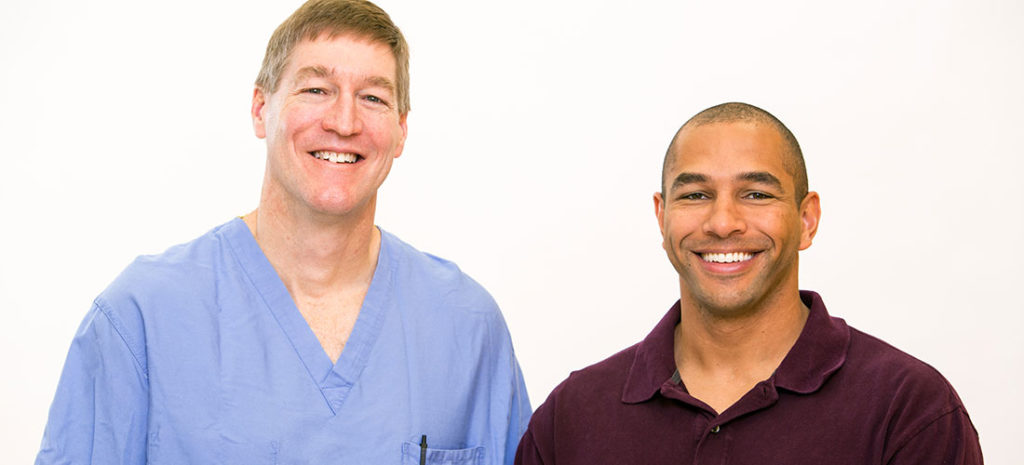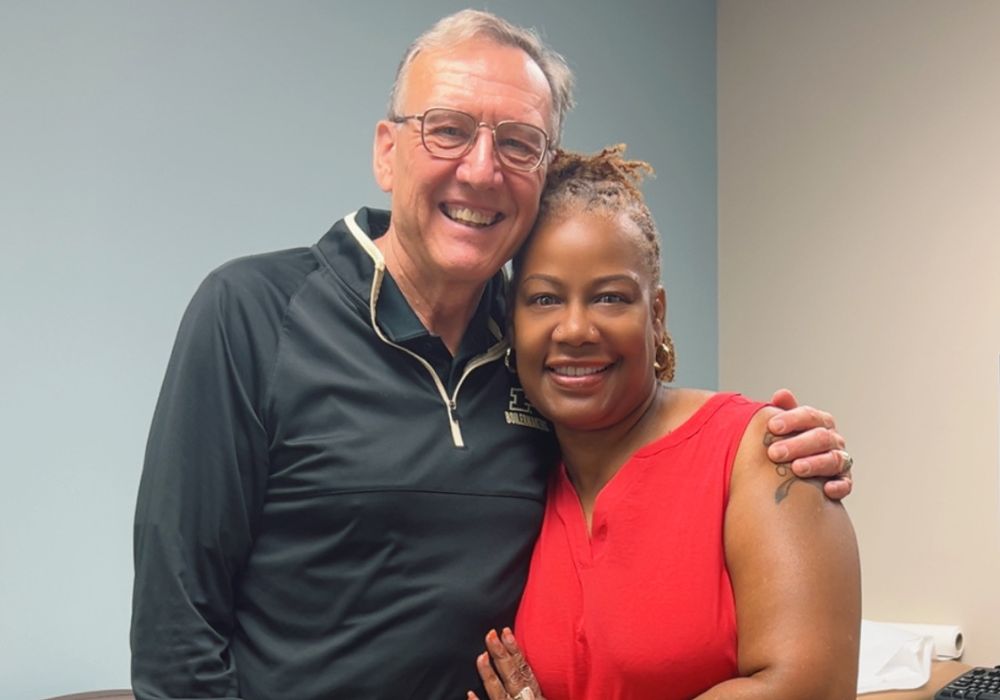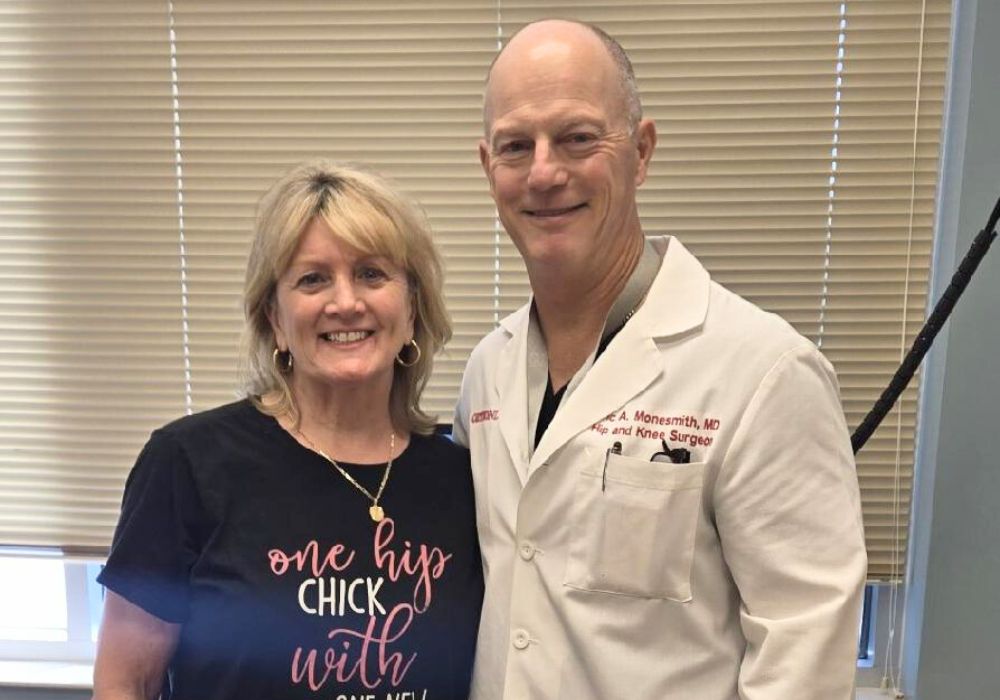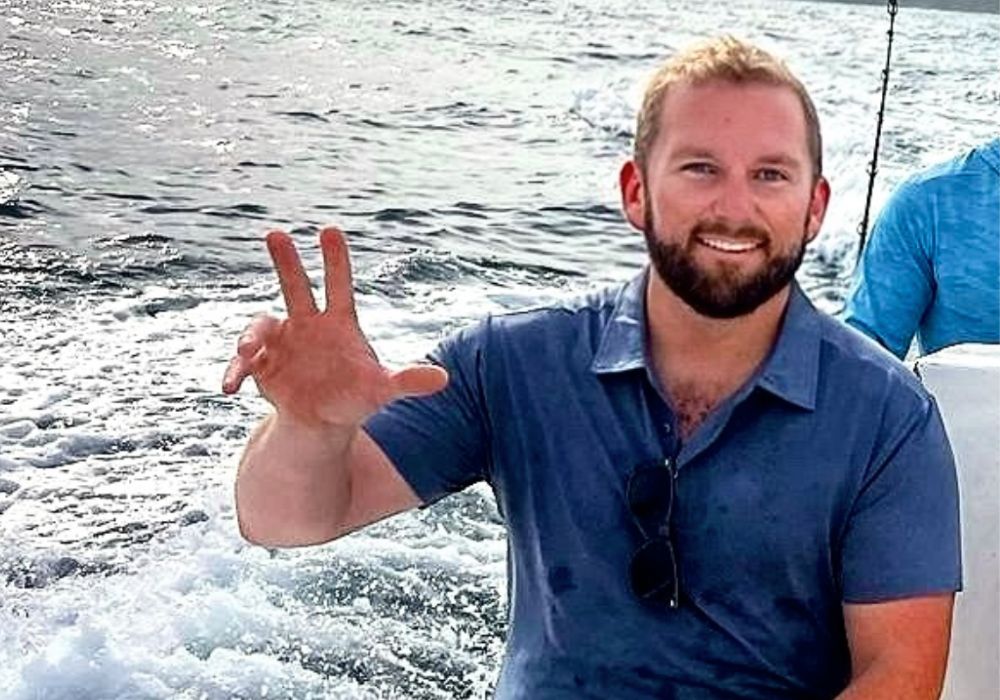THIS POST IS PART OF THE ULTIMATE GUIDE TO FOOT AND ANKLE INJURIES
Last July one of Craig Thompson’s dreams came true when he completed the 200-mile bike race from Seattle to Portland. This annual ride attracts over 10,000 riders and was something Craig had on his bucket-list for quite some time.
Along the way, Craig’s bike broke down and he was forced to sit around for two and a half hours waiting to get a new one. But that didn’t hold Craig back. He put his head down and went as hard as he possibly could for the last 150 miles to make sure he was able to cross the finish line on time.
Ankle surgery
Rewind 137 days and you would never guess that Craig was having ankle surgery at OrthoIndy. Seven months before his big race, Craig had torn his Achilles tendon during a quick pick-up game of basketball.
“From the very first second after the injury, I knew exactly what the injury was and immediately thought about the Seattle to Portland bike ride that I had already paid for and was going to be the high point for my summer’s athletic activities,” said Craig.
The Achilles tendon is the largest tendon in the body. It connects your calf muscles to your heel bone and is used every time you walk, run or jump. So it was no surprise that Craig, being as active as he is, wanted his injury fixed as soon as possible.
A rupture or tear of the Achilles tendon is a tearing and separation of the tendon fibers so that the tendon can no longer perform its normal function. Most ruptures occur four to six centimeters above the heel. The tendon may also tear away from its insertion on the heel bone; when this occurs a fragment of the bone may be pulled away from the heel by the tendon.
Acute or sudden ruptures, like Craig’s, typically occur between the ages of 30 and 50. Most Achilles tears are sports-related. An athlete running forward may feel acute pain or a snap at the back of the ankle.
If you suspect an Achilles tendon injury apply ice and elevate the leg. You may experience swelling at the site of the injury or some discoloration. The injury may be tender or you may feel a gap where the ends of the tendons are separated. Although the Achilles tendon can withstand great stresses from running and jumping, it is vulnerable to injury.
Luckily, Dr. Michael Shea, OrthoIndy surgeon, was there to help. Dr. Shea fit Craig into his schedule the very next morning after his injury and had him in surgery the following day.
“Dr. Shea is funny and extremely easygoing yet experienced, confident and honest. He is exactly the kind of surgeon I wanted to work with.”
Fortunately, Dr. Shea was able to restore Craig’s ankle back to original condition so Craig could get back to doing the things he loved.
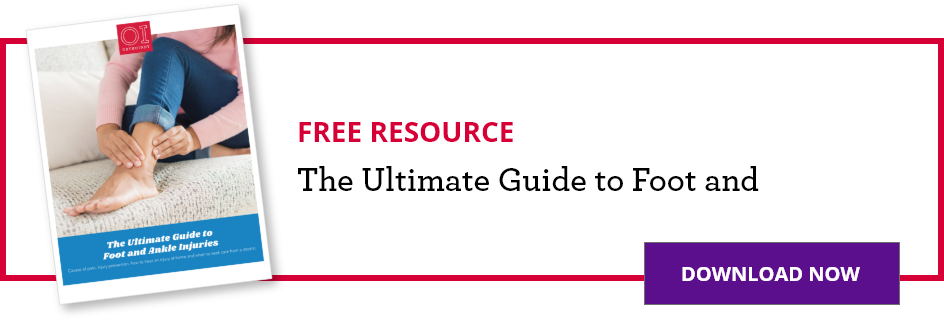
After ankle surgery
Achilles tendon injuries can be treated non-operatively or operatively, like in Craig’s case. Non-operative treatment consists of immobilization or casting followed by physical therapy. Most surgeons recommend operative treatment in a young or middle-aged athlete.
“Everyone that I dealt with at OrthoIndy was superb. Even the operating room technicians graciously took some pictures of the procedure for me so I could see what things looked like during surgery. The facilities are clean, modern and inspire confidence.”
During the outpatient procedure the two ends of the tendons are sutured together. After the procedure the leg will be immobilized in a splint cast or walking boot. When the tendon has started to heal your surgeon will recommend physical therapy. It usually takes four to six months after surgery before you are completely able to get back to an active lifestyle.
“I was able to get around fairly easy right away using crutches,” said Craig. “Of course everything took a lot longer than I was used to. I was back at the gym lifting and using the hand bike two days post-op.”
Once Craig was in a boot, rather than the cast, he felt like things were semi-normal for him again. He was able to be a little more active and even get in a pool and swim.
“I am an extremely active person and always have been. I am grateful to Dr. Shea and OrthoIndy for seeing me the morning after my injury and performing surgery the following day. This quick response, as well as the experience and skill of Dr. Shea allowed me to get back to my active lifestyle as soon as possible, with the expectation of complete, rapid recovery. I will forever be indebted to them.”
Next year, Craig is seriously considering doing the Race Across America(RAAM), which would be 175 miles a day for nine days straight. Good luck Craig!
To schedule an appointment with Dr. Shea please call 317.802.2821 or learn more about ankle treatment at OrthoIndy.
Schedule an appointment
Your well-being is important to us. Click the button below or call us to schedule an appointment with one of our orthopedic specialists. If your injury or condition is recent, you can walk right into one of our OrthoIndy Urgent Care locations for immediate care. For rehabilitation and physical therapy, no referral is needed to see one of our physical therapists.


